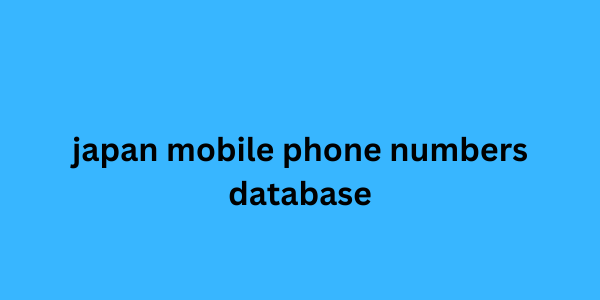The research took place in a special laboratory: the subjects were connected to sensors that tracked biological and psychophysiological reactions. This made it possible to determine which advertisements evoke a stronger response. And then they analyzed the sales results after the end of the advertising campaign.
We have translated the Nielsen report on the experiment for you . The report is not the easiest one - it is detailed and requires thoughtful reading. We have highlighted the conclusions separately - at the very end.
All the details, figures and graphs are below.
Is there still trust in advertising?
We are overloaded with information. The number of media sources is japan mobile phone numbers database breaking records. Let's take the data for the United States alone. The average American watches TV five and a half hours a day. Another two and a half hours listens to the radio. Another hour and a half looks at a smartphone, and another hour at a laptop screen. Add to this game consoles, DVDs and other multimedia - and it turns out that we interact with media all twelve hours. And we are constantly in contact with advertising.
We have one and a half times more channels than five years ago. All sources - radio, television, and the Internet - steal information from each other. But even this fragmentation, constant redistribution of information and lack of uniqueness does not change the fact that people have become more active in interacting with the media. And, contrary to popular belief, they have begun to trust television advertising more. Especially compared to advertising on the radio or the Internet.
The world of modern media is extremely complex and diverse. It is important to define the target audience and the correct presentation. And no matter how impressive the advertising is from a technical point of view, the idea always comes first. Weak creativity cannot be corrected by technical achievements.
Why advertising doesn't work
Advertising flows at us from everywhere. For the eye to catch at least something, the concept must be thought out to the smallest detail. Advertising is everywhere, it fills everything, it is already a new substance like air and water. Let's count: in cable television, 15 minutes of every hour are devoted to advertising. Each commercial lasts an average of 30 seconds. If a person watches TV for five hours, he will see 150 commercials.
And that's just on television. Don't forget about online advertising - banners on websites, ads on social networks. Add radio advertising. And outdoor advertising. As a result, advertising begins to be perceived as background (hence the famous banner blindness), it is harder for it to reach the audience.
What is the basis of strong advertising? And how does it interact with the buyer?
The advertising industry has created dozens of measurement tools based on recall, recognition, attention, intent, and the like. They help measure the impact of advertising on audiences and understand what works and what doesn’t. They’re easy to measure and easy to interpret. That’s important, but it’s not enough.
Because all the metrics that traditional marketing relies on do not reflect whether advertising establishes an emotional connection with a person.
Advertising effectiveness depends on emotions
Emotions are the cornerstone of advertising. There are dozens of theories about how it works, but most modern researchers agree on one thing: all our relationships with brands are based on emotions. And emotions control all decisions – both unconscious and conscious, those that we weigh and think through well.

How long has it been since you came across a commercial with a simple melody that you couldn’t get rid of? Or noticed an image that seemed completely unrelated to the brand, but then became firmly associated with it? Usually, such images, slogans and melodies that stick in the memory indicate the effectiveness of advertising - but they hardly say anything about the qualities of the product itself.
It is important to communicate these qualities and values of the brand. But in most cases, people make a purchase decision not for rational reasons, but just like that. Instinctively, intuitively, spontaneously.
1
Emotions are intangible. How to measure them?
Surveys are pointless - they are not accurate enough, because respondents try to rationally explain and comprehend what they feel. Emotions are instinctive reactions to external stimuli, while feelings (in this context) are the interpretation of these emotions by the mind, where personal stereotypes, past experience, ingrained beliefs, cultural and social characteristics are mixed. And most emotions cannot be understood and adequately interpreted.
Modern researchers believe that the best way to assess emotions is to directly measure biological and psychophysiological reactions: heart rate, sweating, facial expressions, body position, impulses in different parts of the brain. These neuroscience methods help to find new ways to understand consumer behavior. And to set new standards for analyzing the effectiveness of advertising.
